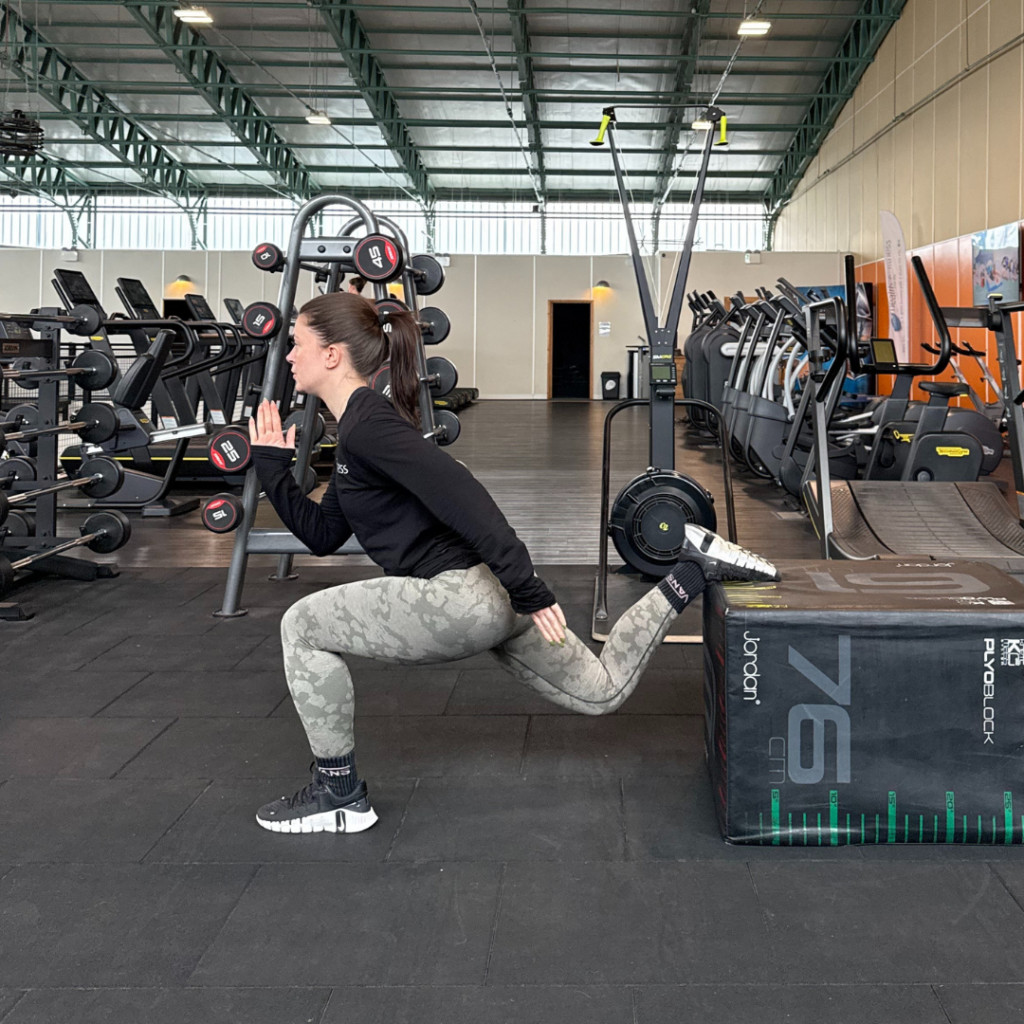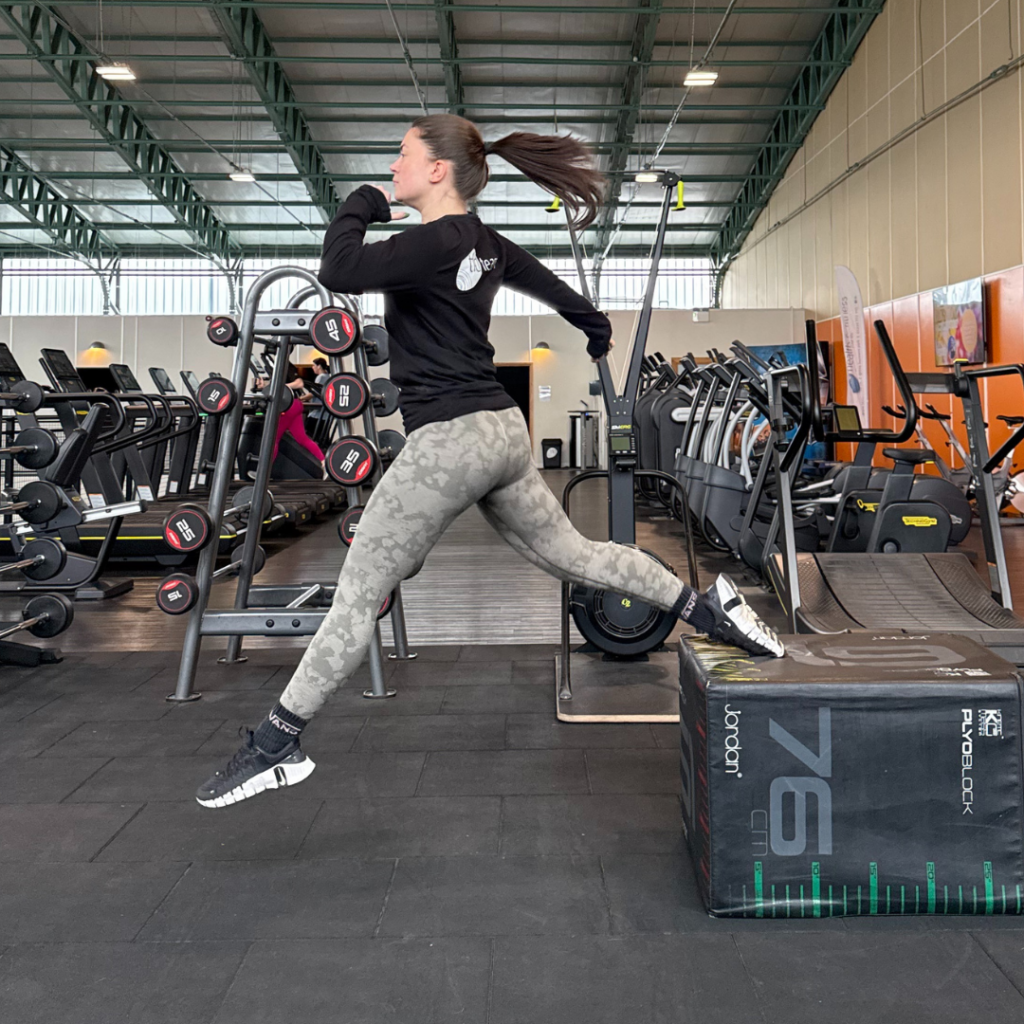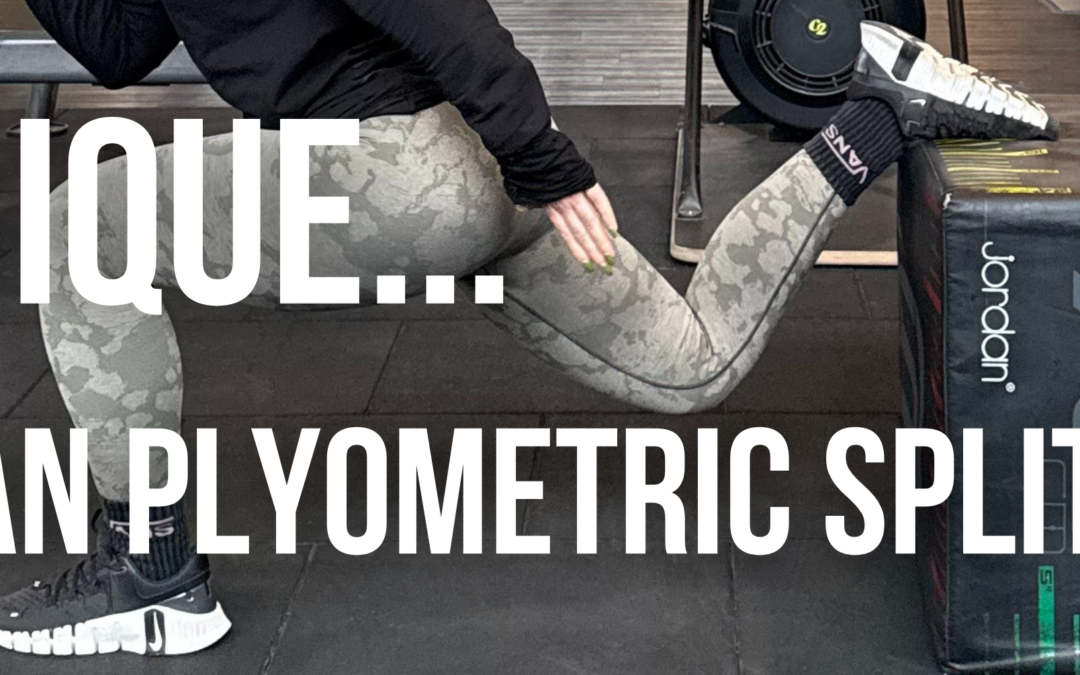What is it?
A Bulgarian Plyometric Split Squat is an advanced variation of your Bulgarian split squat. It combines strength training with plyometrics, enhancing power, because of its unilateral aspect. It is a great alternative to a normal jumping squat, especially for those that might have a muscular discrepancy.
Targeted Muscles:
Gluteus Maximus
Quadriceps
Hamstrings
Hip Flexors
Calves
How to:
- Standing with your feet hip-width apart, place the top of your rear foot onto a bench/ plyo-box.
- Bending your front knee and flexing at the hip, bring your rear knee toward the floor, until your front knee reaches a 90-degree angle.
- Drive through the front heel to explode up, past your starting position, allowing the front foot to leave the floor, maintaining contact between your rear foot and the box.
- Control the landing, landing with a bent leg, moving smoothly into your next elevation.
- Repeat for the number of desired reps before switching and completing on the other leg.


Have the technique nailed and want to advance them further? Hold a dumbbell in either hand, making your muscles work that little bit harder to elevate from the floor.
Things to remember/ key points:
- Aim to keep your back straight and body upright throughout. Keeping your torso engaged facilitates stability throughout the movement.
- Ensure your front knee tracks over your middle toe so as to not place strain on the knee.
- Ensure you have a controlled landing, landing with a bent knee to avoid hyperextending the joint.
- Prioritise form over weight to minimise the risk of injury and maximise the correct muscle activation.
Common mistakes:
- Allowing your back to arch as a result of a too long a stance. This will place strain on your lower spine. To amend this, step your front foot closer to the box.
- Alternatively, too short a stance will result in your knee tracking past your toes which will place strain in the joint. Aim for a 90-degree angle in the front knee.
- Relying on your rear leg for more than just balance. You’ll often find people pushing themselves up with their back leg – this should be for balance only, with the primary focus being the power through that front foot.
Benefits:
Increased muscle activation:
The plyometric factor of this exercise requires a rapid stretch-shortening cycle which results in a more forceful contraction of the muscle fibres. This higher level of muscle activation results in increased muscle tension, particularly in the quadriceps, hamstrings and glutes.
Greater range of motion & increased balance:
Traditional squats require a general level of mobility, while bulgarian rely on greater hip mobility. This increased range of motion allows activation of our lesser used muscles while our muscles contract and relax, working harder to keep us balanced while in a larger stance.
Improved cardiovascular fitness & caloric burn:
Plyometric exercises such as the Bulgarian Split Squat Jump requires explosive movements that rely on maximum effort over a shorter duration of time. This explosive nature places Bulgarian Split Squat Jumps in the High-Intensity bracket; they result in an increased heart rate and greater oxygen consumption. This exercise is therefore beneficial for greater caloric burn.
Increased power:
The explosive jump at the top of this movement relies on a high amount of power, which results in improved overall athletic performance.
Greater muscle endurance:
Like that of the point above, the High-Intensity nature of the exercise aids in improvement of muscular endurance overtime, if done regularly.
Increased unilateral strength:
Bulgarian Split Squats work one leg at a time, which allows for identification and correction of any muscular imbalances or mobility discrepancies. This can help with overall muscular balance but likewise supports unilateral leg strength offering benefit to activities such as running or jumping, that comes from the addition of adding the plyometric aspect to the exercise.
Improved bone density:
Referring to the high-intensity nature of the exercise, Bulgarian Split Squat Jumps are highly beneficial when it comes to bone density. The high impact as you land your jump, promotes the stimulation of bone growth, while the activation of multiple leg muscles, places stress on the bone and encourages an increase in bone density.
In summary, Bulgarian Split Squat Jumps are the ultimate plyometric exercise because they provide a full-body, high-intensity workout. Provide an increase in power, balance and stability, are versatile, can increase bone density, and reduce the risk of injury. When done correctly and with proper form, they can be a valuable addition to your fitness routine.
Give them a go and let us know how you get on.

